When it comes to navigating the complex world of trading, understanding the significance of volume-based indicators can be the difference between success and uncertainty.
With a multitude of indicators at your disposal, each offering unique perspectives on market dynamics, selecting the most effective ones is paramount.
As you explore the realm of volume-based indicators, you'll uncover essential tools that can enhance your trading strategies and potentially elevate your trading performance.
Volume-Based Trading Indicator Overview
When delving into the world of volume-based trading indicators, it's imperative to understand their role in analyzing trading volume to inform your trading decisions effectively.
Volume, a key component in market analysis, is essential for assessing market sentiment and strength. Indicators like On-Balance Volume (OBV), Money Flow Index (MFI), and Volume Weighted Average Price (VWAP) are commonly used to gauge trading activity relative to price movements.
OBV tracks cumulative volume to predict price trends, while MFI combines volume and price for momentum analysis. VWAP, on the other hand, calculates the average price based on both volume and price, providing insight into the average price investors are willing to pay throughout the trading day.
Understanding these indicators is vital for interpreting market dynamics accurately.
VWAP Indicator for Trading Training
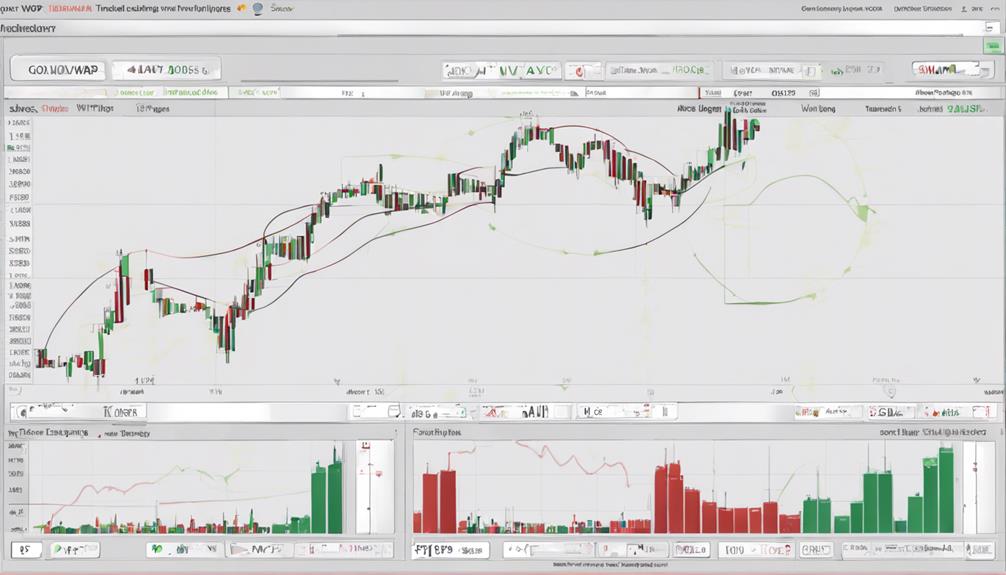
As you explore the VWAP Indicator for trading training, you'll uncover its significance in evaluating price and volume dynamics to make informed trading decisions effectively.
- VWAP (Volume-Weighted Average Price) serves as a benchmark price incorporating both volume and price data.
- Trading above VWAP is seen as bullish, while trading below it's considered bearish, aiding traders in decision-making.
- Institutional investors commonly utilize VWAP to assess whether trades were executed at a good price.
VWAP provides a dynamic reference point that's recalculated with each trading session, offering traders a valuable tool to analyze market trends and determine entry and exit points. Understanding VWAP can help traders navigate the markets with more confidence and precision.
Money Flow Index (MFI) Indicator
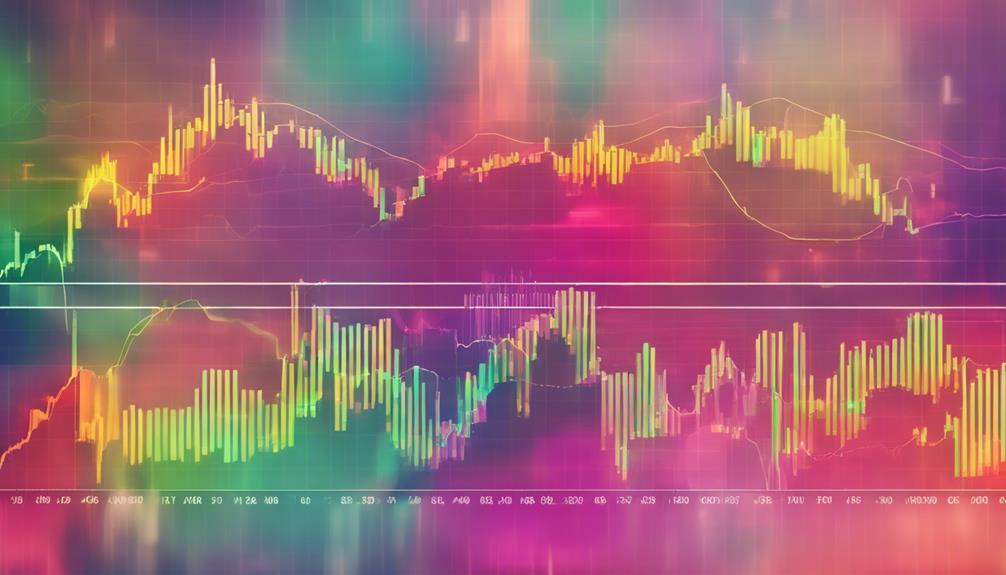
Curious about a powerful indicator that combines price and volume to gauge market sentiment effectively? The Money Flow Index (MFI) does just that. It assesses buying and selling pressure by considering both price and volume data.
Ranging from 0 to 100, the MFI helps identify overbought conditions (above 80) and oversold conditions (below 20). By pinpointing market extremes, the MFI assists traders in anticipating potential reversals.
This volume-weighted Relative Strength Index (RSI) is instrumental in recognizing significant price movements. Understanding how the MFI reflects market dynamics can enhance your trading strategies, enabling you to make informed decisions based on the interplay between price action and trading volume.
Accumulation/Distribution Indicator Explained
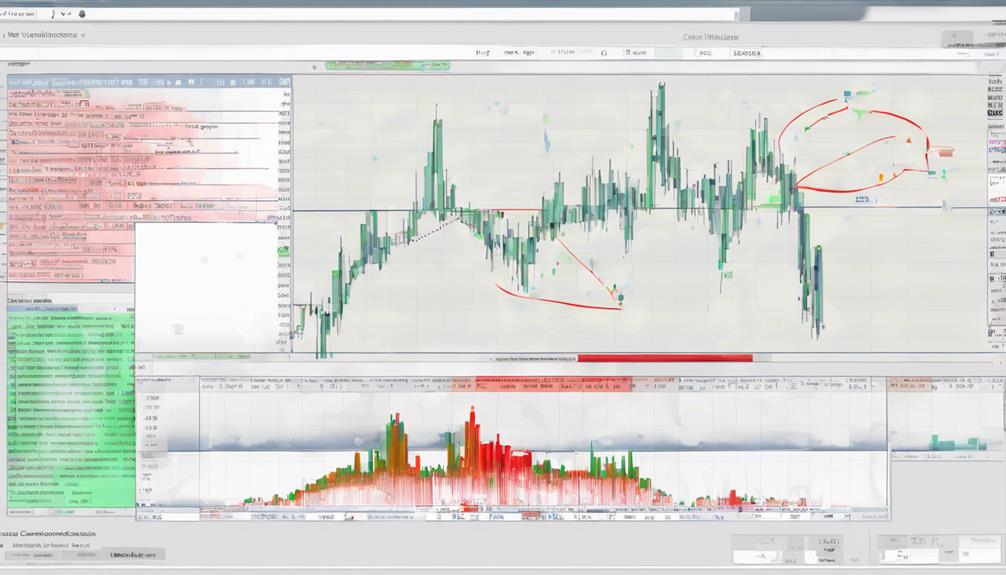
When considering the Accumulation/Distribution Indicator, focus on the essential aspects of Volume Flow Analysis and the correlation between price movements and volume activity. By understanding how this indicator tracks buying and selling pressure, you can interpret trends more accurately.
Pay close attention to how the Accumulation/Distribution Line changes, as it provides crucial insights into potential price movements.
Volume Flow Analysis
Wondering how volume flow analysis can provide valuable insights into market trends and price movements? The Accumulation/Distribution Indicator, a key component of volume flow analysis, offers a deeper understanding of market dynamics. Here's why it matters:
- Identifying Trends: The Accumulation/Distribution Line tracks money flow into or out of an asset, aiding in confirming trends.
- Predicting Market Movements: By analyzing volume activity, traders can anticipate potential price trends and market shifts.
- Informing Trading Decisions: This indicator is crucial for shaping trading strategies, as it highlights buying or selling pressure and market sentiment.
Mastering volume flow analysis, including the Accumulation/Distribution Indicator, can enhance your ability to navigate the markets successfully.
Price and Volume Correlation
The Accumulation/Distribution Indicator is an essential tool in volume flow analysis that evaluates the correlation between price movements and trading volume to gauge market dynamics accurately. By tracking the relationship between price and volume, this indicator helps assess buying and selling pressure.
A rising A/D Line indicates accumulation or buying pressure, suggesting a positive trend. Conversely, a falling A/D Line signifies distribution or selling activity, indicating a potential reversal. Traders can use the A/D Line to spot emerging trends and make informed trading decisions based on volume activity.
Understanding how price and volume correlate through the Accumulation/Distribution Indicator empowers traders to interpret market movements effectively and capitalize on opportunities in the market.
Chaikin Money Flow Indicator Insights
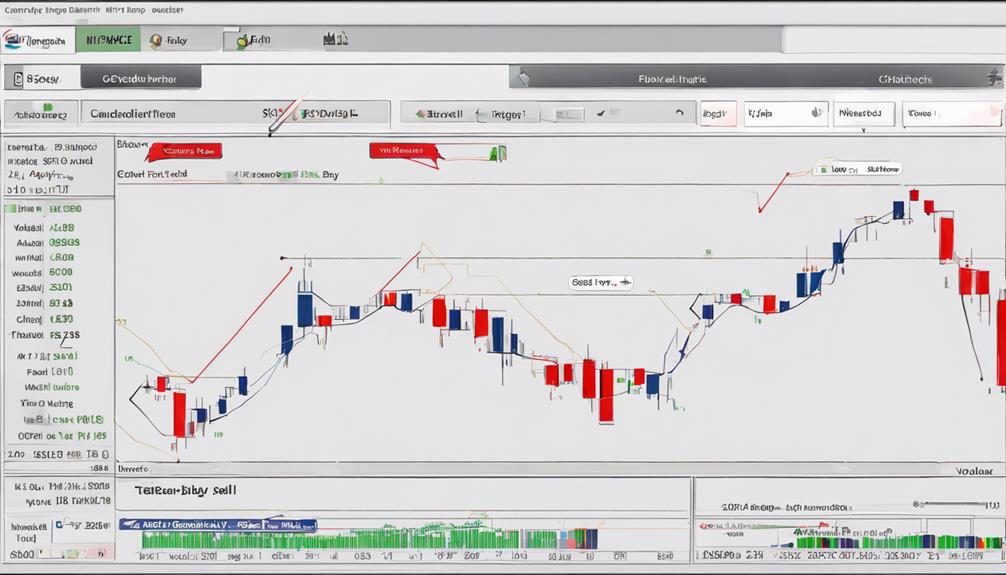
Explore how the Chaikin Money Flow Indicator sheds light on market sentiment and potential price movements through its volume-weighted analysis. Traders rely on the Chaikin Money Flow (CMF) for its ability to gauge bullish or bearish sentiment accurately. By analyzing the money flow dynamics, CMF helps in predicting price movements effectively based on volume-weighted insights.
Here are three key insights into the Chaikin Money Flow Indicator:
- Positive CMF values signal a bullish market sentiment.
- Negative CMF values indicate a bearish market sentiment.
- CMF assists in identifying potential breakouts or breakdowns, aiding traders in making informed decisions.
Klinger Oscillator Usage in Trading
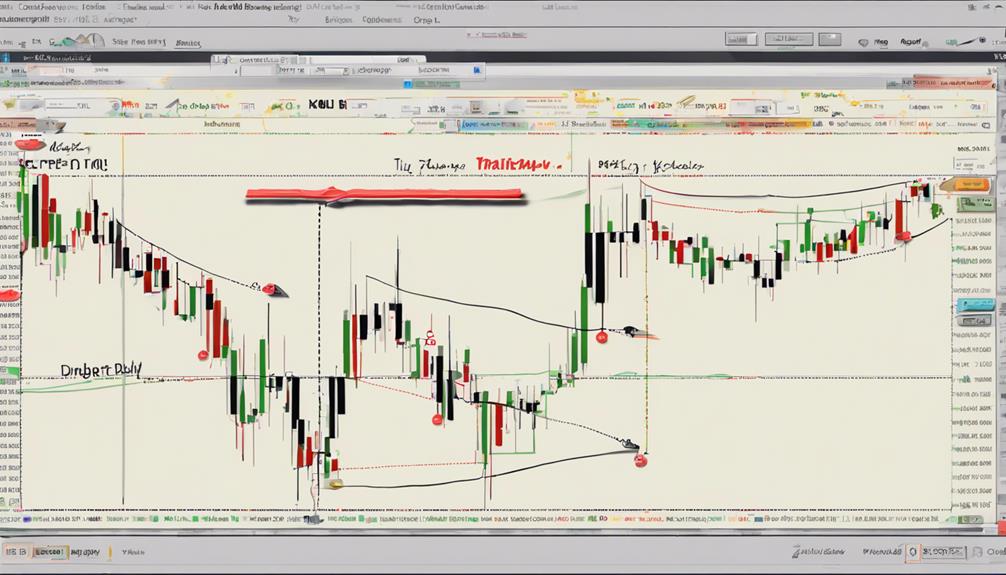
Utilizing the Klinger Oscillator in trading involves integrating price and volume data to anticipate market trends with heightened sensitivity. This volume indicator calculates market strength by taking the difference between a 34-period and a 55-period Exponential Moving Average (EMA), making it effective for identifying long-term trends.
Traders rely on the Klinger Oscillator to pinpoint divergences, which can indicate potential trend reversals. Positive values on the oscillator often signal bullish sentiment, while negative values typically suggest bearish sentiment. By analyzing the relationship between price and volume dynamics, traders can gain insights into market shifts and make better-informed trading decisions.
The Klinger Oscillator serves as a valuable tool for traders looking to interpret market trends accurately and act on changing conditions effectively.
Volume-Weighted Moving Average (VWMA) Guide

When exploring the Volume-Weighted Moving Average (VWMA) Guide, you'll first encounter the calculation process that incorporates both price and volume data.
As you delve into VWMA trading strategies, you'll learn how this indicator can be used to confirm trends and spot potential reversals in the market.
Understanding the benefits of using VWMA can provide you with valuable insights into market dynamics and enhance your ability to make well-informed trading decisions.
VWMA Calculation Process
To calculate the Volume-Weighted Moving Average (VWMA), multiply the typical price of an asset by the volume traded and then divide it by the total volume. When computing VWMA, consider the following:
- Weighted Calculation: VWMA weighs price based on the volume traded during a specific period.
- Smoothing Effect: VWMA smooths out price movements, giving more weight to periods with higher volume.
- Responsiveness: VWMA is more responsive to price changes compared to simple moving averages.
Traders rely on VWMA to confirm trends, spot potential reversals, and make well-informed trading decisions based on volume-weighted price movements. Understanding the VWMA calculation process is crucial for utilizing this indicator effectively in your trading strategies.
VWMA Trading Strategies
Explore various trading strategies utilizing the Volume-Weighted Moving Average (VWMA) to enhance your market analysis and decision-making processes. VWMA, by emphasizing price levels with more trading activity, helps traders identify significant price action areas.
This moving average incorporates volume data into its calculation, offering a dynamic view of the market and reflecting changes in price and volume trends accurately. Traders use VWMA to confirm trends, spot potential reversals, and make informed decisions based on volume-weighted price levels.
Benefits of Using VWMA
Building upon the insights gained from trading strategies involving the Volume-Weighted Moving Average (VWMA), understanding the benefits of utilizing VWMA in your market analysis is essential for enhancing decision-making processes and maximizing trading outcomes.
- VWMA incorporates volume data in calculating moving averages, providing a more accurate representation of price action.
- It gives more weight to periods with higher volume, reflecting the significance of trading activity in price movements.
- Traders use VWMA to confirm trends, identify entry and exit points, and gauge the strength of price moves.
On Balance Volume (OBV) Indicator Strategies
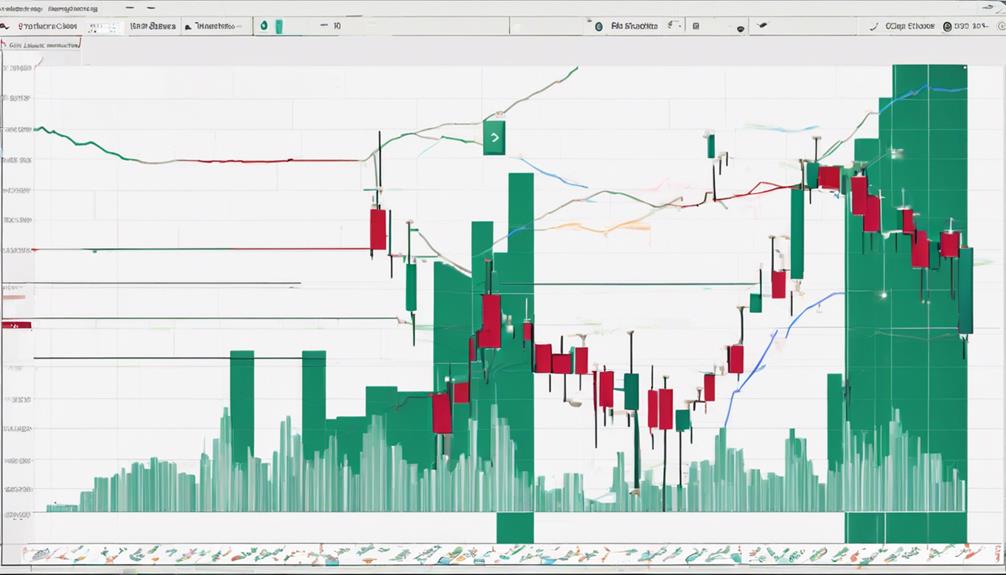
When implementing On Balance Volume (OBV) Indicator Strategies in your trading approach, consider how this tool measures buying and selling pressure to inform your decisions effectively.
OBV calculates the cumulative volume based on price direction, confirming trends by reflecting buying or selling pressure. A rising OBV line suggests buying pressure, supporting the current price trend.
Divergence between OBV and price movements can indicate potential reversals, offering traders early signals to adjust their positions. As a leading indicator, OBV assists in anticipating price changes through volume analysis.
Institutional investors often rely on OBV to assess market sentiment and make well-informed trading choices. By incorporating OBV into your strategy, you can leverage its insights to enhance your trading decisions and stay ahead of market movements.
Negative Volume Index (NVI) Application
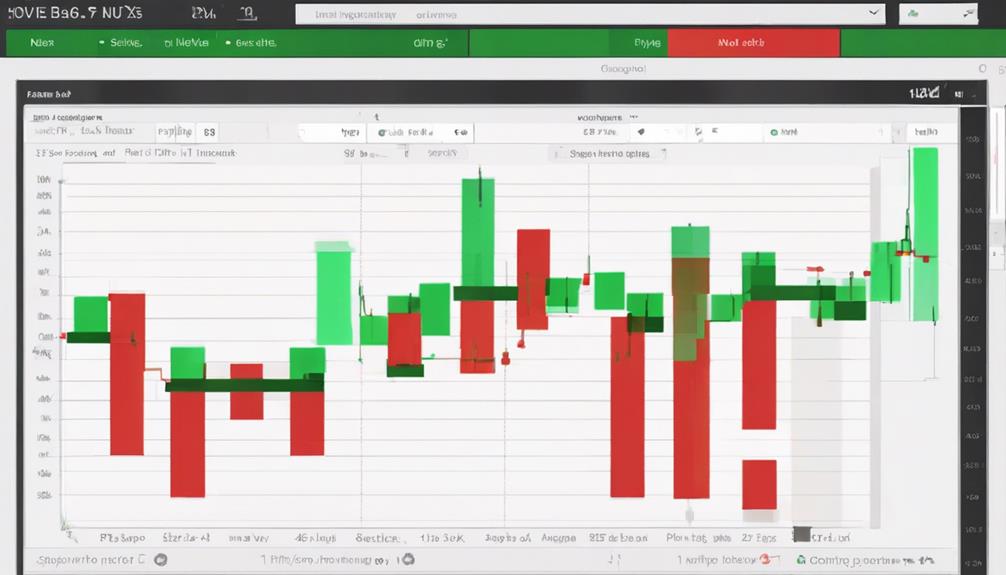
Detect smart money activity in the market through the application of the Negative Volume Index (NVI), a cumulative indicator that reveals potential trends based on the relationship between volume and price.
When using NVI, you can:
- Identify bearish sentiment: NVI rises when the price closes lower than the previous day's close on lower volume, indicating bearish sentiment.
- Recognize informed investors: This indicator helps traders identify periods when informed investors are actively participating in the market.
- Make informed decisions: NVI is a valuable tool for assessing market sentiment and making informed trading decisions based on volume activity.
Ease of Movement Indicator Tutorial
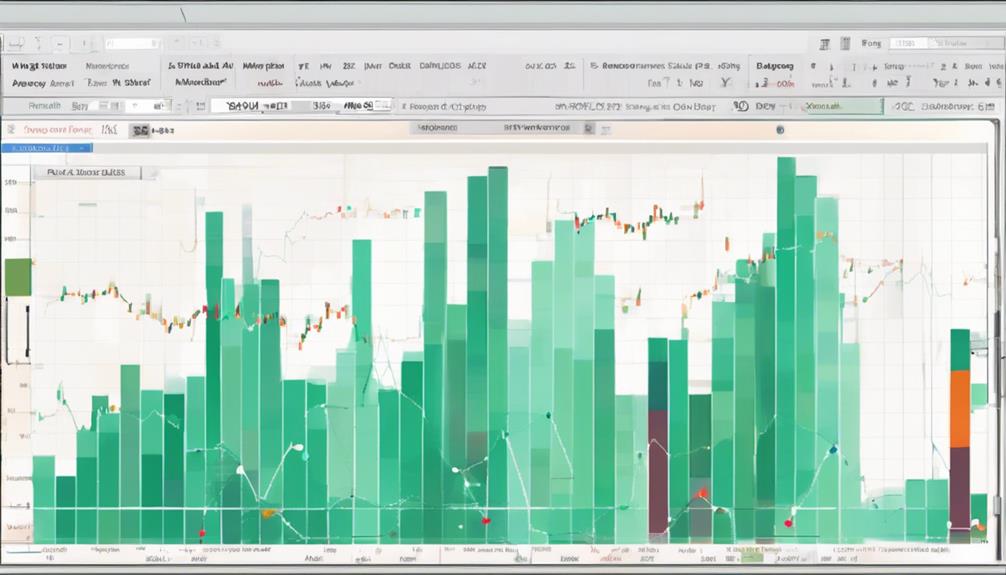
When looking at the Ease of Movement Indicator, focus on understanding its calculation process and interpreting signal strength.
This indicator considers both price and volume to gauge the significance of price movements accurately.
Indicator Calculation Process
Calculating the Ease of Movement (EMV) Indicator involves analyzing the relationship between volume and price changes to gauge the smoothness of market movements. When delving into the Indicator Calculation Process, consider the following:
- EMV Formula: The EMV is calculated by dividing the current period's high-low price range by the volume. This ratio is then adjusted based on the direction of price movement.
- Interpreting EMV Values: Positive EMV values indicate easier price movement, while negative values suggest challenges in price fluctuation.
- Application in Trading Strategies: Incorporating EMV in your market analysis can help identify potential price trends and enhance the ability to predict breakouts or breakdowns based on volume and price dynamics.
Interpreting Signal Strength
To interpret signal strength effectively using the Ease of Movement Indicator Tutorial, focus on analyzing the relationship between price change and volume for a clear assessment of market dynamics.
The Ease of Movement Indicator (EMV) offers insights into the ease of price movement while filtering out volume fluctuations. A rising EMV suggests smoother price movement, indicating a stronger signal for potential price trends.
Conversely, a falling EMV implies that price movement is more challenging, signaling a possible reversal in trends. Traders rely on EMV to confirm existing price trends and anticipate trend reversals based on the ease of price movement.
What Are the Best Volume-Based Indicators for Increasing Profits in Trading?
When it comes to boosting profits with volume indicators in trading, some of the best options include the Accumulation/Distribution Line, On-Balance Volume, and Chaikin Money Flow. These volume-based indicators can provide valuable insights into market activity and help traders make more informed decisions.
Frequently Asked Questions
What Is the Best Indicator Based on Volume?
For the best indicator based on volume, consider the Volume-Weighted Average Price (VWAP), Money Flow Index (MFI), Accumulation/Distribution Line (A/D Line), Chaikin Money Flow (CMF), and On-Balance Volume (OBV) to enhance your trading strategies.
What Is the Most Accurate Volume Indicator in Tradingview?
When trading in TradingView, the On-Balance Volume (OBV) indicator stands out as the most accurate volume indicator. It precisely gauges conviction behind stock movements, aiding you in making informed decisions.
What Is the Most Successful Trading Indicator?
To determine the most successful trading indicator, consider your trading style and goals. Experiment with various indicators like OBV, MFI, and VWAP to find what aligns best with your strategy. Combining indicators can enhance decision-making.
What Indicator to Use With Volume Profile?
When using Volume Profile, combine it with indicators like VWAP, RSI, and MACD for a comprehensive analysis. Pairing it with moving averages can confirm trends and pinpoint entry/exit spots. Fibonacci levels provide additional support/resistance guidance.
Conclusion
You've learned about the top volume-based indicators for trading training, but remember, volume doesn't always tell the whole story. Sometimes, the quietest markets can be the most dangerous, while high volume doesn't always guarantee success.
So, while these indicators can provide valuable insights, always remember to consider the bigger picture and not rely solely on volume for your trading decisions. Keep analyzing, keep learning, and keep evolving your trading strategies for long-term success.
